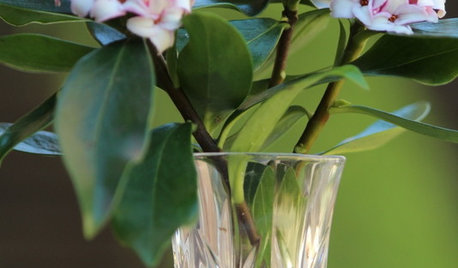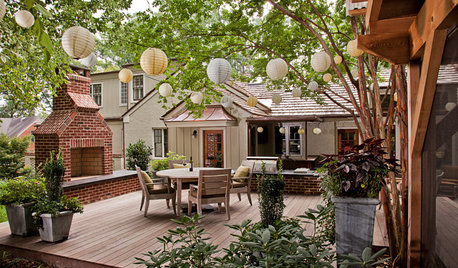Daphne Summer Ice is losing leaves
briergardener_gw
14 years ago
Related Stories

EARTH DAYThe Case for Losing the Traditional Lawn
Work less, help the environment and foster connections by just saying no to typical turf
Full Story
GARDENING GUIDESGreat Design Plant: Winter Daphne
Perfume your garden or home with the tiny pink flowers of this treasured shrub — it's a diva, but the effort is worth it
Full Story
MOST POPULARSimple Pleasures: Savor Summer’s Last Hurrah
Choose from 3 easy celebrations to close summer out in a soul-satisfying way
Full Story
MOST POPULAR40 Dogs Who Are Having a Way Better Summer Than You
Houzzers share pics of their canine companions living it up — or getting down with relaxing — on warm days
Full Story
MOST POPULARA Fine Mess: How to Have a Clean-Enough Home Over Summer Break
Don't have an 'I'd rather be cleaning' bumper sticker? To keep your home bearably tidy when the kids are around more, try these strategies
Full Story
LANDSCAPE DESIGN7 Great Trees for Summer Shade and Fall Color
These landscape-pro faves straddle the seasons beautifully. Could one enhance your own yard?
Full Story
SUMMER GARDENINGHow to Grow Basil
Bright color, quick growth and endless uses for cooking make this summer annual a winner in the garden or a pot
Full Story
BEDROOMSHow to Choose the Perfect Bedsheets
Don't lose any shut-eye over scratchy or ill-fitting sheets; our mini guide to materials, thread count and fit will help you sleep tight
Full Story
KITCHEN DESIGNStay Cool About Picking the Right Refrigerator
If all the options for refrigeration leave you hot under the collar, this guide to choosing a fridge and freezer will help you chill out
Full Story
MOST POPULAR11 Nominees for the ‘She Shed’ Hall of Fame
These special sanctuaries let busy women get away from it all without leaving the backyard
Full Story








Embothrium
Embothrium
Related Professionals
Cary Landscape Architects & Landscape Designers · Glen Ellyn Landscape Architects & Landscape Designers · Middle River Landscape Architects & Landscape Designers · Roosevelt Landscape Architects & Landscape Designers · Rossville Landscape Architects & Landscape Designers · Aloha Landscape Contractors · Hoover Landscape Contractors · Huntington Landscape Contractors · Painesville Landscape Contractors · Ponte Vedra Beach Landscape Contractors · West Chester Landscape Contractors · Whittier Landscape Contractors · Brea Fence Contractors · Lockport Fence Contractors · Oakdale Fence Contractorsgardengal48 (PNW Z8/9)
briergardener_gwOriginal Author
gardengal48 (PNW Z8/9)
buyorsell888
hemnancy
Embothrium
hemnancy